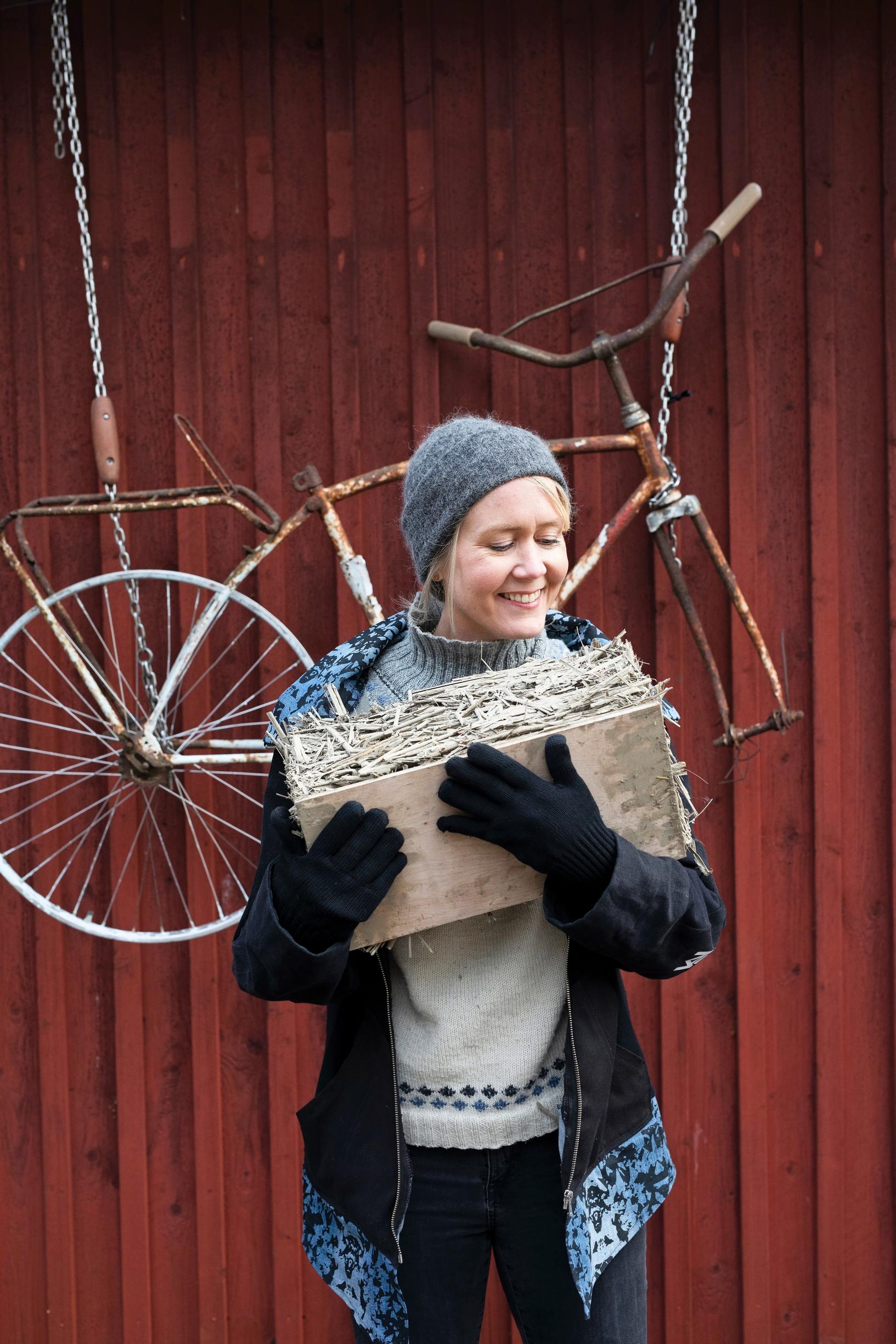
Anna builds an eco-house from an old log home and changed her entire lifestyle: “Sustainable living doesn’t have to mean sadness and scrimping”
I might not witness the ultimate consequences of our current lifestyles, but my child surely will, thought Anna Evilä. This realization led her to a more sustainable way of living, which also became her job.
The laptop is going to be replaced. Not because its owner, 43-year-old Anna Evilä, wants a new one, but because the eleven-year-old machine has reached the end of its life. Anna uses her electronics until they no longer work, and doesn’t buy them new anymore. This is one of the ways she aims to live within the planet’s carrying capacity.
There are many more examples: Anna has decided to fly only once every six years. She realized that a vacation doesn’t have to mean a plane ticket and palm trees.
Anna eats meat at most twice a week. She stopped eating red meat in her twenties and now only buys chicken if it’s about to expire and get thrown out. Because of emissions associated with the fishing industry, she opts for wild-caught fish in her cooking.
Anna only allows herself to buy five new items of clothing per year.
“I have very few clothes. That’s why I always look the same in photos, but I don’t mind.”
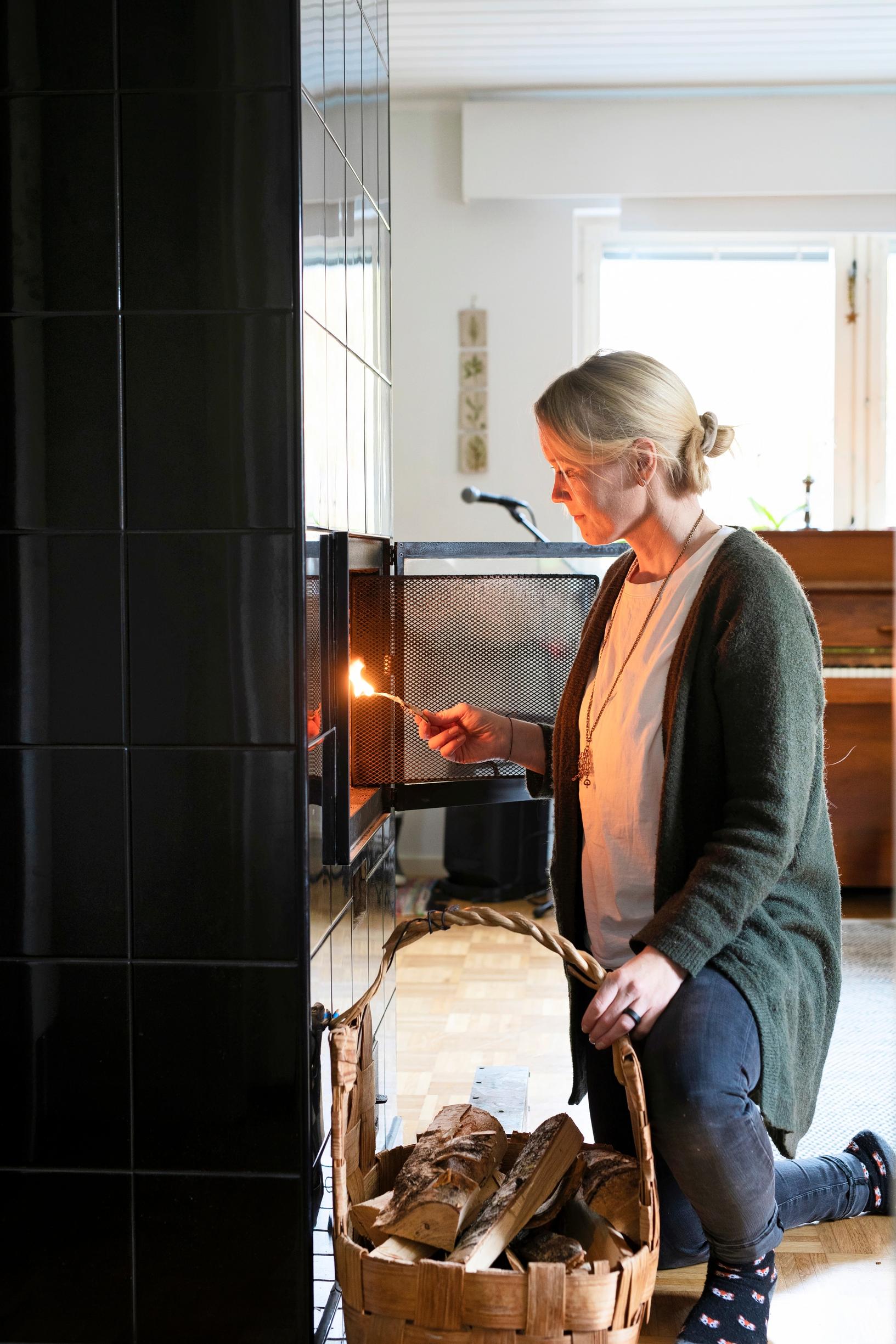
Anna also focuses on green living in her professional life. About five years ago, she founded Jalotus, a center and community dedicated to sustainable living in Kerava, Southern Finland.
Their goal is to see 200,000 Finns adopt more sustainable lifestyles by 2030—a social change requires 3.5 percent of the population. At the time of the writing of this article, Jalotus was about to introduce Elämänjalotus, a tool which helps people to take climate- and nature-friendly actions in their everyday lives, along with actions that support their own wellbeing.
Some things that bring Anna joy are meaningful work, winter swims, and watching her children grow.
“We want to show that sustainable living doesn’t mean scarcity, scrimping, or sadness—it’s about wellbeing and finding purpose,” Anna says.
A sense of wellbeing can be achieved sustainably through acts of kindness, exercise, and time spent with friends, for example. They can replace the quick thrill many people seek from shopping.
“Even in my late twenties or early thirties, I likely would’ve said that what gives me that feel-good boost is a trip to Thailand.”
“I can’t be the one who did nothing”
Nature has always been important for Anna, who has been a member of the Scouts since she was a child. In her twenties, she chose to study environmental technology, and her textbooks made it clear how serious the situation of our planet was.
“Even twenty years ago, it was stated quite plainly that we were heading for a crash.”
At the time, nobody was talking about climate anxiety yet, but Anna began to feel it. She questioned whether she could spend her whole life working on this subject, and switched her studies to nature and adventure tourism.
“In my twenties and thirties, I lived like everyone else. I didn’t actively think about environmental issues and traveled enough to cover a lifetime.”
Having her first child in 2011 opened Anna’s eyes again.
“That’s when I realized I might not witness the ultimate consequences of our current lifestyles, but my child surely will. I thought, I can’t be that 80-year-old who’s asked why we did nothing.”
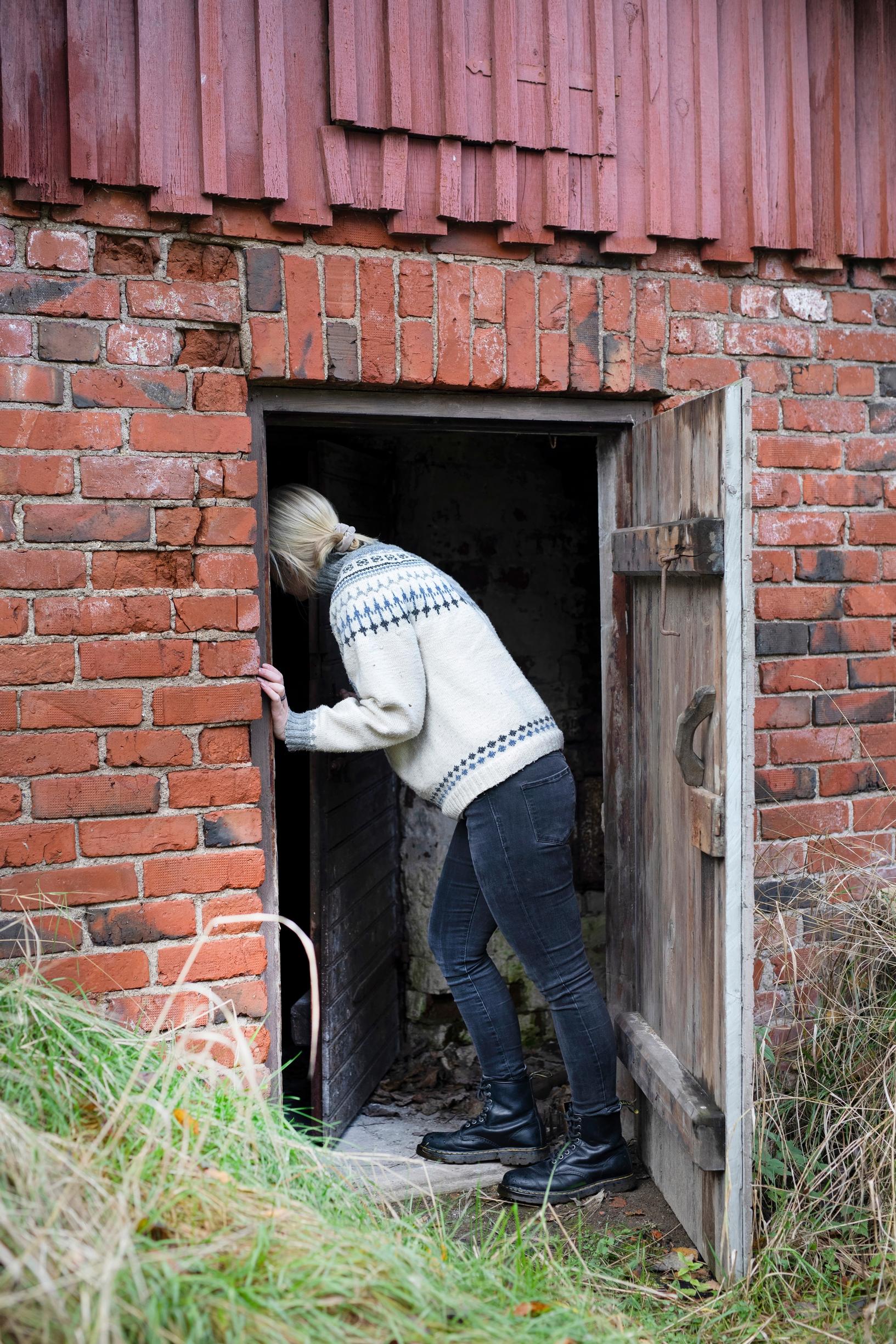
“Why couldn’t you give used items as gifts?”
Anna’s first eco-friendly choice was moving into a smaller space.
“When my father passed away, I started thinking about how I could both look after my mom and cut down on my housing emissions. So I split my home into a studio apartment for my mother and a two-bedroom unit for my family.”
Anna had a sense that people wanted to live sustainably but struggled to grasp the bigger picture. Meanwhile, governments and businesses didn’t seem to have a handle on it at all.
“My scouting background had given me a mindset that if something is wrong, you fix it.”
Anna had left her position at the central organization for the Guides and Scouts of Finland, as she had felt for a while that she was meant to do something else.
So she began to consider what would help her personally understand the bigger picture of sustainable living. She realized she needed to see it in practice. So Anna started gathering like-minded people and sustainability practitioners around the Kerava Manor area. Gradually, Jalotus took shape.
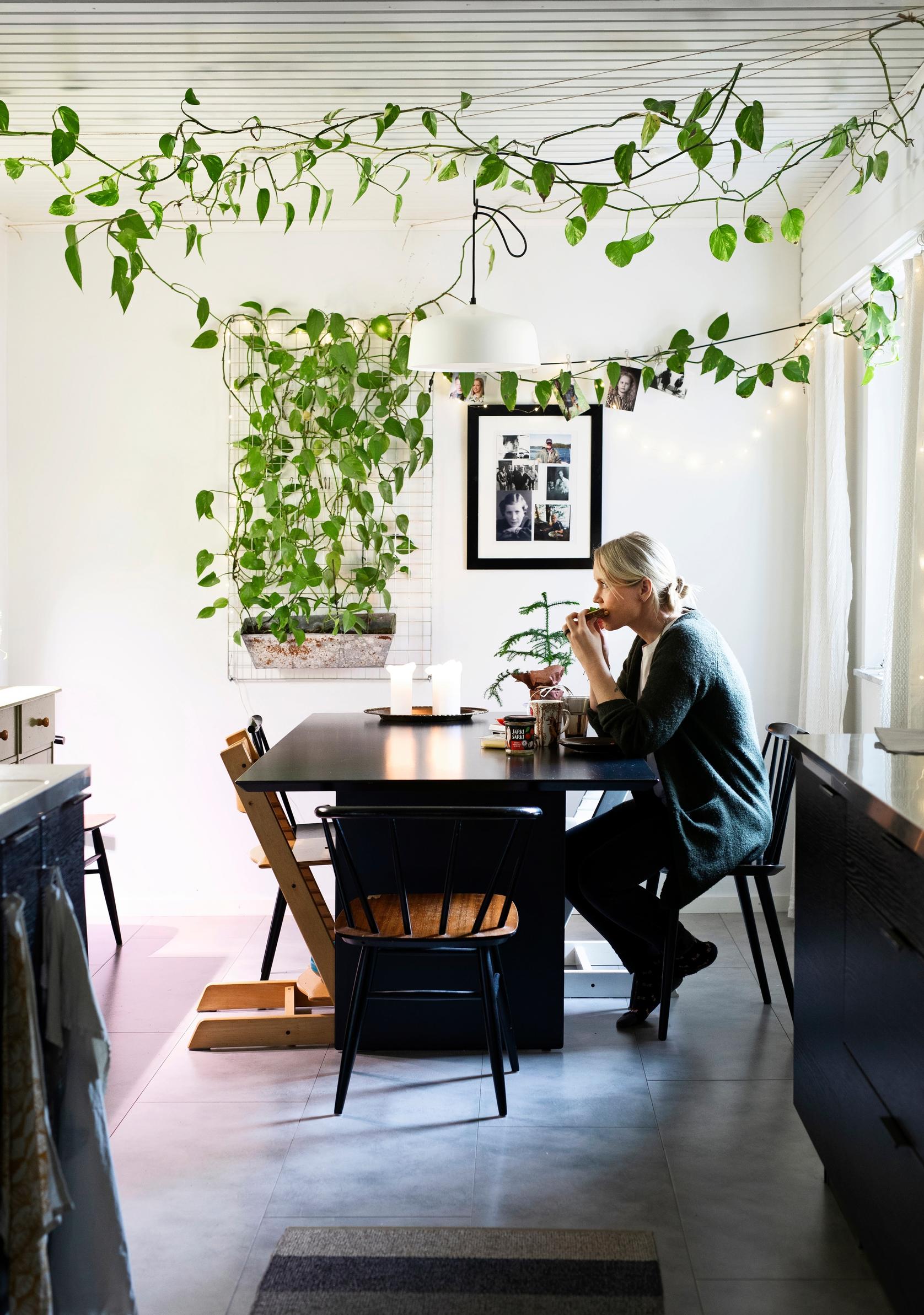
Her own lifestyle changed and solidified as Anna learned more about sustainability.
For instance, she switched to natural cosmetics and eco-friendly cleaning supplies once she started thinking about the products’ journey down the drain, through the treatment plant, and eventually reaching the ocean.
She also noticed certain unwritten rules—like why can’t we give used items as gifts, or why should we always wear a new dress to a party?
“The hardest part was admitting that flying has a major impact on the climate. I used to combine trips to Bali with volunteering, for example, but I can’t justify that anymore.”
Anna thinks eco-friendly products and services have progressed rapidly—even just a decade ago, plant-based proteins, for exampe, were “pretty dreadful” in her opinion. You had to just trust they would get better over time.
At times, it’s been frustrating: everyone knows where our current way of life leads, but even this collective awareness hasn’t led to big enough action.
“Doing my part to avoid more harm to the planet eases my anxiety. Many people say taking action helps that anxiety fade.”
“Sustainable living comes with a sense of community”
Anna’s carbon footprint is now about 4,500–5,000 kilograms a year. She plans to reduce it to 2,500 by 2026. The Intergovernmental Panel on Climate Change (IPCC) says everyone should strive for that number by 2030 to keep global warming under 1.5 degrees.
To get there, Anna might refine her diet a little more.
“Food waste is my challenge, but I’ve learned from my partner to check the cupboards before going to the grocery store.”
“Moderation often means consuming less. For some, it may allow working fewer hours.”
The biggest factor remains heating, though. Once Anna’s new eco-house is done, that energy usage will drop. Designed to accommodate her blended family, it won’t require heating rooms that sit empty every other week. In general, the house is designed with energy efficiency in mind.
An old log house is repurposed for the frame and nontoxic natural materials will be used in the construction. Appliances and furniture will be secondhand. Anna is planning a custom wastewater treatment solution, where reclaimed nutrients might be used for growing food.
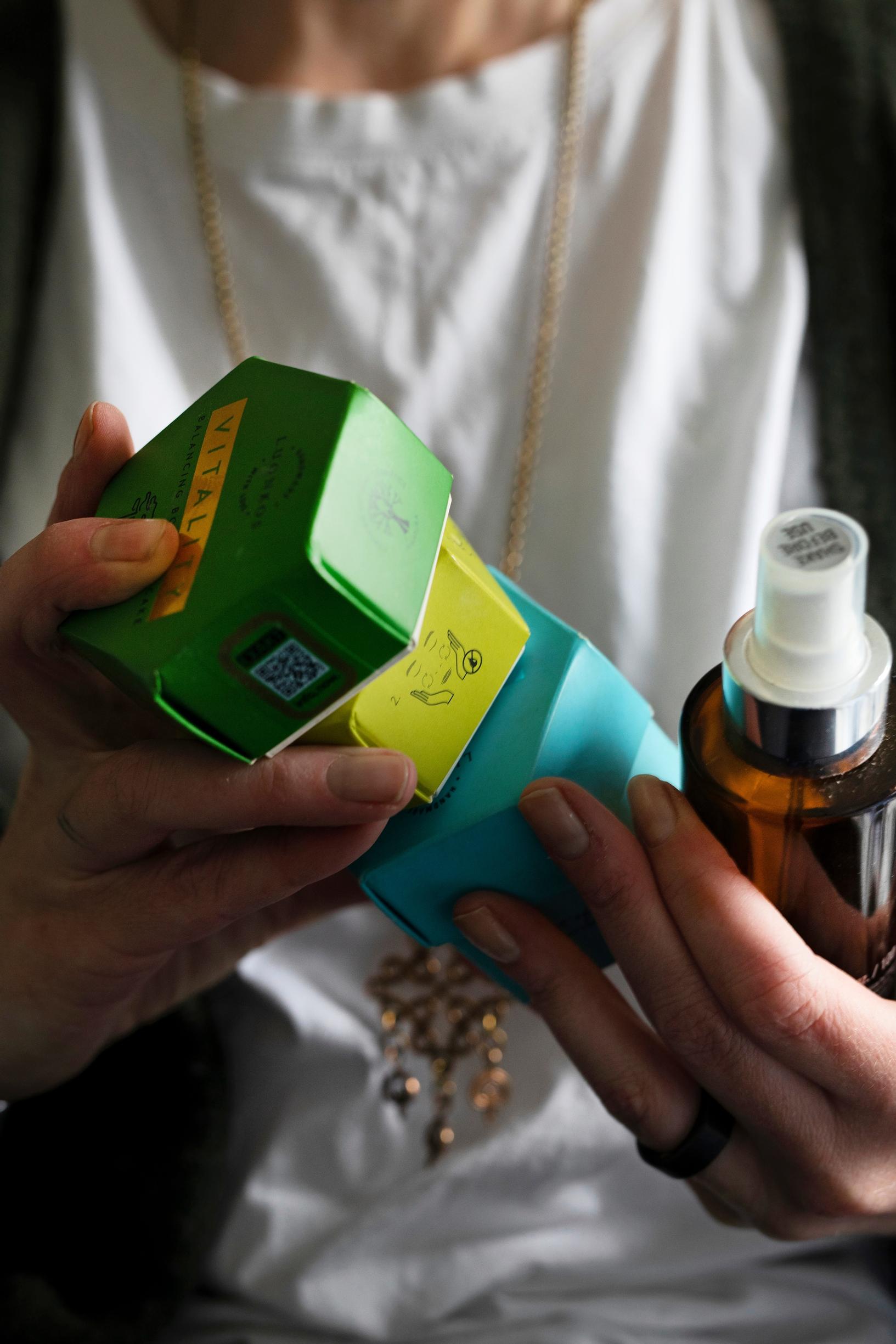
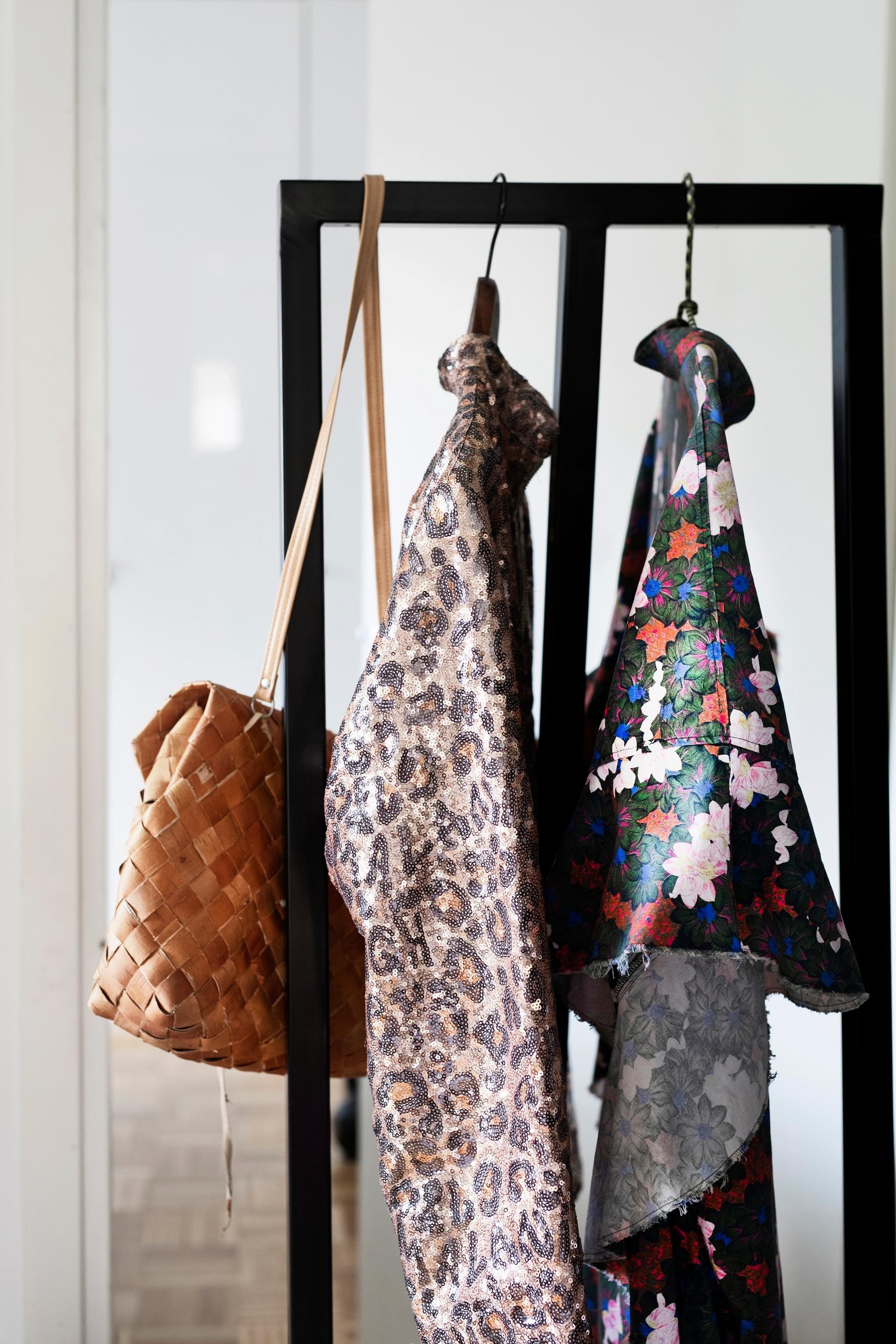
Anna sees the eco-house as an extreme example of sustainable living. Otherwise, her lifestyle could easily be mainstream.
“And you don’t have to do sustainable living perfectly. We need a large group of people living more sustainably, not a handful who do it flawlessly.”
In everyday life, you can start with small changes. If you eat yogurt every day, try switching to a plant-based option, for example.
“You can practice moderation. You don’t have to forbid or cut things out entirely.”
“We need a large group of people living more sustainably, not a handful who do it flawlessly.”
Moderation often means consuming less. For some, it may allow working fewer hours.
For Anna, her current lifestyle and work at Jalotus have also led to longer vacations, giving her more time to travel by land.
Anna went car-free for a long time, but after some research, she discovered a biogas vehicle was the most ecological choice. She bought a van to travel instead of flying.
“It was a big aha moment to see how many amazing places there are close by. Last summer, I went to northern Norway, and the scenery is incredible. Next summer, I might take my kids to the beaches in the Baltics.”
Overall, a more moderate, sustainable lifestyle gives more than it takes. Anna says this lifestyle often comes with a sense of community. For instance, swinging by a clothing rental service is more social than hitting a fast-fashion store.
“Often, sharing-economy solutions come with personal interaction,” Anna says.
“When I organized a shared electric car trial in a housing cooperative, the biggest result, in my opinion, was the revival of communal sauna nights, and the neighbors also started helping each other water plants during vacations.”


